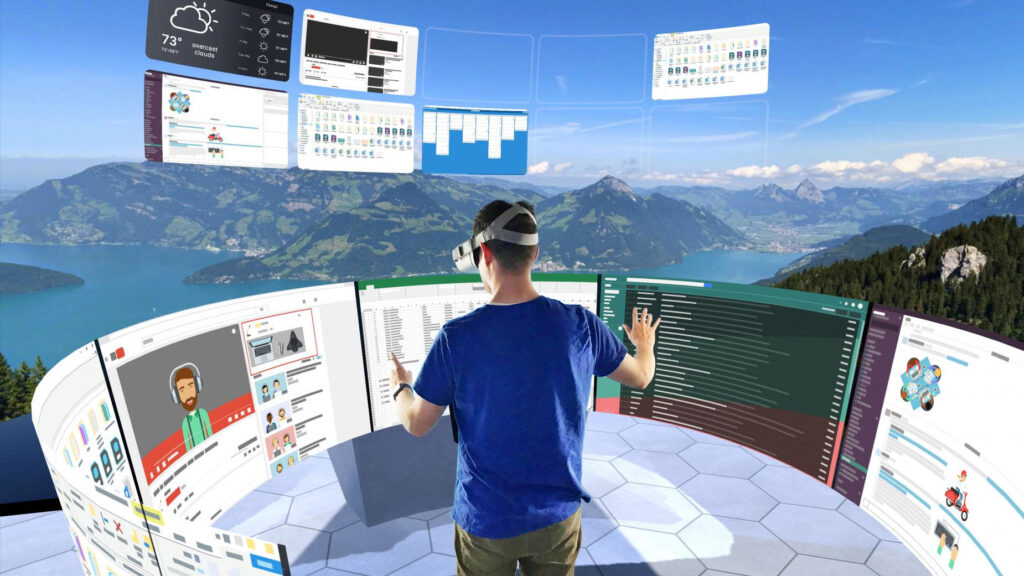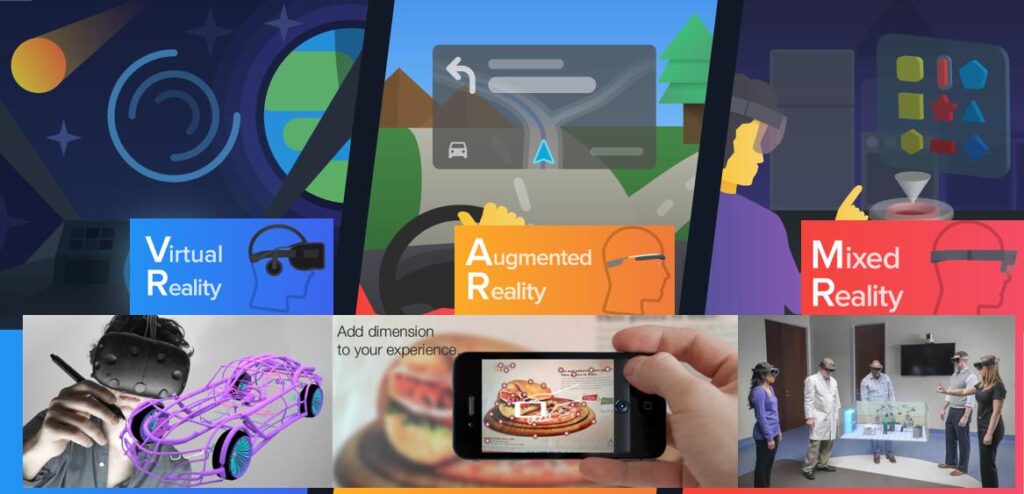Virtual reality (VR) is no longer a futuristic concept, but a reality that is changing the way we interact with technology. As technology evolves, so do its potential applications, including marketing. In this post, we’ll explore the future of virtual reality and its impact on marketing, and how businesses can prepare to take advantage of this emerging technology.
Future of Virtual Reality and Marketing
Virtual reality (VR) is transforming the marketing landscape by providing businesses with an immersive and interactive way to engage with customers. With VR, businesses can create experiences that are both memorable and engaging, allowing customers to interact with products and services in ways that were once impossible. This not only drives customer engagement but also creates a more emotional connection between customers and brands, which can lead to increased loyalty and sales.
One of the most significant advantages of the Future of Virtual Reality in marketing is the ability to provide customers with personalized experiences. By using VR, businesses can tailor experiences to each individual customer, providing a more engaging and memorable experience.
For example, a travel agency could use VR to give potential customers a virtual tour of a destination, allowing them to explore the location and get a feel for the local culture. This can help businesses to build stronger connections with their customers, as well as drive sales by making the experience of purchasing a product or service more enjoyable.
VR is a powerful tool for businesses looking to engage with customers in new and innovative ways. By creating immersive and personalized experiences, businesses can build stronger connections with their customers and drive sales. As VR technology continues to evolve, we can expect to see more creative and innovative uses of VR in marketing. It would provide businesses with even more opportunities to connect with their customers and stand out from the competition.
Top 5 impacts of the Future of Virtual Reality on Marketing
Personalized experiences
The future of virtual reality in marketing lies in creating personalized experiences for customers. With VR, businesses can create immersive experiences tailored to each customer, providing a more engaging and memorable experience. This can help businesses to build stronger connections with their customers, as well as drive sales by making the experience of purchasing a product or service more enjoyable.
Enhanced storytelling
Virtual reality offers a powerful storytelling tool for businesses. By creating immersive experiences, businesses can tell their brand story in a more engaging and memorable way. This can help to create a stronger emotional connection with customers and build brand loyalty. As VR technology continues to evolve, we can expect to see more creative and innovative storytelling techniques that take full advantage of the medium.

Increased engagement
Virtual reality can also increase customer engagement by providing a more interactive and engaging experience. This can help businesses capture customers’ attention for longer and keep them more engaged with the brand. As a result, businesses can create a more memorable experience for customers and drive higher levels of customer engagement and loyalty.
Improved data insights
As virtual reality becomes more widely adopted, it will also provide businesses with more data insights. By tracking where customers look, what they interact with, and how they move, businesses can gain valuable insights into customer behavior. This can help businesses to create more targeted and personalized marketing campaigns that are more effective at reaching the right customers at the right time.
Increased accessibility
As virtual reality technology continues to evolve, it will also become more affordable and accessible to businesses of all sizes. This will create new opportunities for businesses to incorporate VR into their marketing strategies and compete on a more even footing with larger companies. As a result, we can expect to see more businesses adopting virtual reality in their marketing campaigns in the years to come.
AR and VR Combined effect on Marketing, what would be the possible result?
The combination of augmented reality and virtual reality has the potential to revolutionize the way businesses market their products and services. By blending the physical and digital worlds, AR and VR can provide an immersive and interactive experience for customers. Which will help them to engage with products in a more tangible and meaningful way. Here are some possible results of combining AR and VR in marketing:
Enhanced Customer Engagement:
AR and VR can create an engaging and interactive experience for customers, making the marketing campaign more memorable and increasing brand loyalty. For example, a furniture retailer could use AR to allow customers to virtually place a piece of furniture in their home and see how it looks before making a purchase, providing a more personalized and interactive experience.
Increased Sales:
By allowing customers to interact with products in a more meaningful way, AR and VR can increase the likelihood of a purchase. For example, a cosmetics company could use AR to allow customers to try on virtual makeup, which can help them make a purchasing decision.
Improved Brand Awareness:
AR and VR can create a buzz around a marketing campaign, generating excitement and word-of-mouth marketing. For example, an amusement park could use VR to give customers a virtual tour of a new ride, generating excitement and anticipation for its launch.
Enhanced Customer Education:
AR and VR can be used to provide customers with educational content that can help them understand a product or service better. For example, a car manufacturer could use AR to allow customers to explore the features of a car and understand how they work.
The combined effect of AR and VR on marketing can lead to;
- More Engaging and Interactive Campaigns,
- Increased Sales,
- Improved Brand Awareness,
- Enhanced Customer Education,
- Competitive Edge in The Market.

Can VR Headset bring the marketer closer in the Future?
Virtual reality (VR) headset technology has the potential to bring marketers and their customers closer together in the future. With the immersive and interactive experiences provided by VR, businesses can create more engaging and personalized marketing campaigns. Which will allow customers to interact with products and services in ways that were once impossible.
By using VR, businesses can transport customers to a different world and allow them to experience a product or service in a more interactive and engaging way. This can help businesses to build stronger emotional connections with their customers, which can lead to increased loyalty and sales. For example, a car manufacturer may employ VR to simulate a test drive for prospective purchasers. This will help them to have a more realistic and immersive experience with the car. This can help customers to make more informed purchasing decisions and build a stronger emotional connection with the brand.
In addition to providing more engaging experiences, VR headset technology can also provide marketers with valuable insights into customer behavior. Businesses may better understand customer tastes and actions by tracking customers’ whereabouts, responses, and movements. This data can be used to create more targeted and personalized marketing campaigns. As the Future of Virtual Reality advances, the marketing campaign would be more effective at reaching the right customers.
Wrapping UP
The future of virtual reality is bright, and its potential impact on marketing is significant. By creating personalized experiences, enhancing storytelling, increasing engagement, improving data insights, and increasing accessibility, virtual reality can provide businesses with a powerful tool for creating more effective marketing campaigns. As VR technology continues to evolve, businesses that embrace it will be well-positioned to succeed in the years ahead.
FAQ’s
What is the future of virtual reality gaming?
The future of virtual reality gaming looks promising, with advancements in technology. It will allow for more immersive experiences and a wider range of games available.
How will virtual reality impact the education industry in the future?
Virtual reality has the potential to revolutionize the education industry. It will provide immersive learning experiences and simulations that can improve retention and engagement.
What industries will be impacted by the future of virtual reality technology?
Virtual reality technology has the potential to impact a wide range of industries, including gaming, entertainment, healthcare, education, and more.
How will virtual reality change the way we work in the future?
Virtual reality has the potential to transform the way we work. It empowers remote collaboration, virtual meetings, and immersive training experiences.
What are the potential health risks associated with virtual reality use in the future?
While virtual reality is generally considered safe, there are some potential health risks associated with prolonged use. Such as eye strain, nausea, and motion sickness.
What are the current limitations of virtual reality technology and how will they be overcome in the future?
The current limitations of VR technology include the high cost of equipment, limited content, and technical issues such as motion sickness. These limitations are likely to be overcome as technology improves and becomes more affordable.
What are the social implications of virtual reality in the future?
Virtual reality has the potential to impact social interactions and relationships in the future. As people may spend more time in virtual environments rather than in the physical world.
How will virtual reality impact the entertainment industry in the future?
Virtual reality is already starting to impact the entertainment industry. With immersive experiences such as virtual concerts and movie screenings becoming more common with VR in future.
How will virtual reality impact the tourism industry in the future?
Virtual reality has the potential to revolutionize the tourism industry. It will pave roads for virtual tours, attractions, and provide immersive experiences for travelers.
What new advancements in virtual reality technology can we expect to see in the future?
We can expect to see advancements in virtual reality technology such as improved graphics, more realistic haptic feedback. Also, we will observe the quick development of new input devices to enhance the user experience.

